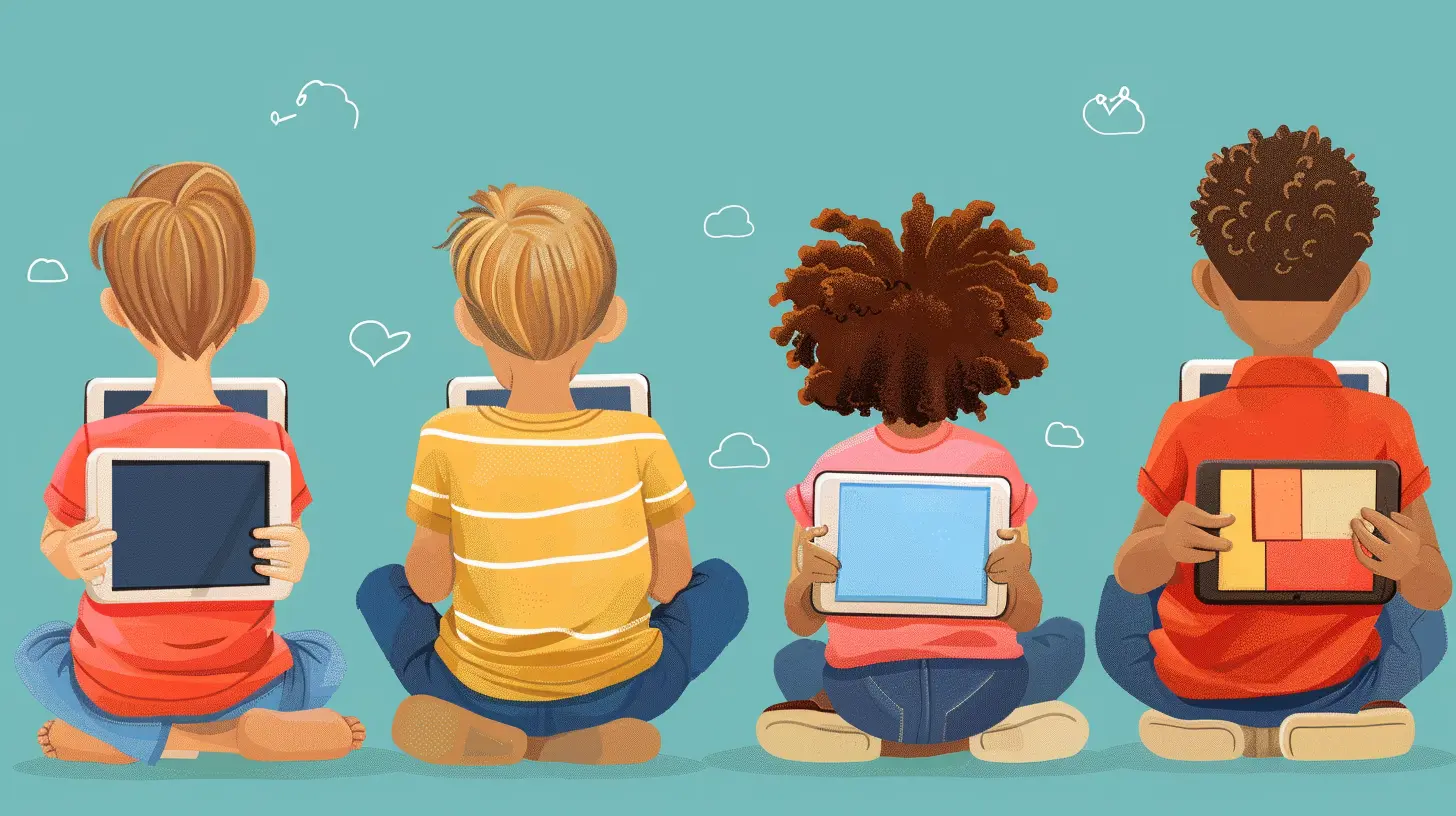How to Use Technology Effectively in a Flipped Classroom
19 June 2025
In recent years, classrooms have undergone a major transformation. One of the most notable changes has been the rise of the flipped classroom model – a teaching approach that turns traditional learning on its head. Instead of receiving lectures in class and doing homework at home, students in a flipped classroom learn the material at home via videos or other online resources and come to class to engage in discussions, hands-on activities, and collaborative problem-solving. Sounds pretty cool, right?
But here's the thing: in order for this model to really work, technology plays a pivotal role. Without the right tech tools, you might find it difficult to create a truly engaging and effective flipped classroom experience. So, how can teachers harness the power of technology in a flipped classroom? Let’s dive into the details and break down how you can use tech to enhance learning in this innovative setup.

What is a Flipped Classroom?
Before we get into the tech side of things, let's first define what a flipped classroom actually is. Traditionally, students would attend a lecture in class, only to go home and struggle with homework on their own. But with a flipped classroom, students are introduced to the content before they come to class. They engage with learning material – such as instructional videos, readings, or podcasts – at home. Then, when they come to class, they apply what they’ve learned through interactive activities like discussions, group work, and problem-solving.In simpler terms: learn at home, apply at school. This method shifts the teacher's role from a "sage on the stage" to more of a guide on the side.
Now that we’ve got the basics down, let’s talk about where technology fits into this equation.

Why Technology is Key to a Successful Flipped Classroom
Without technology, the flipped classroom would be much harder to implement. You’d essentially be asking students to teach themselves from a textbook at home. That's not what we’re aiming for, right? Instead, technology enables you to create engaging, multimodal content that students can access on their own time. Whether it’s a video, audio lesson, or interactive quiz, technology makes learning more flexible and accessible.Plus, technology allows you to track student progress, customize lessons, and offer individualized support – all outside of class time. So when students actually come to class, you can focus on what matters most: engagement and interaction.
But how do you use technology effectively in a flipped classroom? Let’s dive into some practical strategies.

1. Create Engaging Pre-Class Content
The beauty of the flipped classroom is that students can learn at their own pace, which means the content you assign for home learning needs to be engaging and adaptable. Technology is perfect for this.1.1. Video Lessons
One of the most popular tools in a flipped classroom is the video lesson. Why? Because it’s dynamic, visual, and can be replayed as many times as needed. Tools like Screencast-O-Matic, Loom, or even YouTube allow you to record short, effective video lessons that break down complex topics into bite-sized, understandable chunks.But here’s the kicker: don’t just record your lecture and call it a day. Keep your videos short and to the point – ideally 5-10 minutes long. Use visuals, animations, and examples to illustrate key concepts. And remember, you don’t always have to be the one creating the videos. There are plenty of great educational resources out there on platforms like Khan Academy, TED-Ed, or CrashCourse that can save you time while still delivering quality content.
1.2. Interactive Content
Videos are great, but some students learn better through interactive experiences. Platforms like Edpuzzle allow you to make videos more interactive by embedding quizzes or reflection questions directly within the video. This helps ensure students are actively engaging with the material rather than passively watching.Another great tool is Nearpod, which lets you create interactive lessons that include polls, quizzes, and even virtual field trips. This kind of engagement can make a huge difference in a flipped classroom, especially for those students who may struggle with staying focused.

2. Use Learning Management Systems (LMS)
A Learning Management System (LMS) is essential for keeping your flipped classroom organized. It’s the hub where you’ll upload all your resources, assign pre-class work, and track student progress. There are several great LMS options out there, including:- Google Classroom
- Moodle
- Canvas
- Schoology
Using an LMS, you can easily distribute your video lessons, PDFs, interactive content, and quizzes. It also allows students to submit assignments and ask questions outside of class time. Plus, many LMS platforms offer built-in analytics, so you can track how long students are spending on each assignment or video.
3. Foster Collaboration with Technology
Flipped classrooms thrive on in-class collaboration, and technology can help enhance this collaboration both in and out of the classroom. Here are a few tools that can help:3.1. Google Workspace Tools
Google Docs, Google Slides, and Google Sheets are perfect for group projects and collaborative assignments. Students can work together in real-time, even if they’re not physically in the same place. You can also leave comments to guide their progress and provide feedback instantly.3.2. Discussion Platforms
Use platforms like Padlet or Flipgrid to create a space for online discussions before or after class. Flipgrid, for example, allows students to post video responses to prompts, fostering a more personal and engaging discussion. This can be especially useful for students who might not feel comfortable speaking up in class.3.3. Collaborative Mind Mapping
For brainstorming or organizing ideas, tools like MindMeister or Miro can be incredibly useful. These platforms allow students to collaborate on mind maps in real-time, helping them visually organize their thoughts and ideas.4. Make Assessment More Dynamic
Assessments in a flipped classroom don’t have to be limited to traditional tests and quizzes. Technology opens up a world of possibilities for more dynamic, formative assessments.4.1. Quizzes and Polls
Platforms like Kahoot!, Quizizz, and Socrative let you create fun, interactive quizzes and polls that students can complete at home or in class. These tools provide instant feedback, so students know right away whether they’re on the right track. Plus, they add a gaming element, making learning more enjoyable.4.2. Peer and Self-Assessment
With tools like Peergrade, you can enable students to provide feedback on each other’s work. This not only promotes critical thinking but also helps students learn from one another. You can also assign self-assessments using Google Forms or Microsoft Forms, allowing students to reflect on their understanding of the material.5. Personalize Learning with Adaptive Technology
In a flipped classroom, students learn at different paces. Some grasp concepts quickly, while others may need more time and support. This is where adaptive technology comes into play.5.1. Adaptive Learning Platforms
Platforms like Knewton, Smart Sparrow, or IXL offer personalized learning experiences by adjusting the difficulty of tasks based on each student’s performance. These platforms use algorithms to identify areas where a student may be struggling and adapt the content accordingly. This ensures that every student gets the support they need, whether they’re working ahead or catching up.5.2. Data-Driven Instruction
Many of the tech tools we’ve discussed come with built-in analytics, allowing you to track student progress in real time. Use this data to identify which students are excelling and which may need extra help. You can then tailor your in-class activities to address these gaps, ensuring that no student gets left behind.6. Keep the Classroom Environment Engaging
While the focus of a flipped classroom is on what happens outside of the classroom, it’s important not to overlook the in-class environment. Use technology to make the classroom more engaging and interactive.6.1. Gamification
Gamifying your classroom can make learning fun and engaging. Tools like Classcraft or GooseChase let you turn classroom activities into games, complete with challenges, rewards, and leaderboards. This can help boost motivation and encourage collaboration among students.6.2. Virtual and Augmented Reality
If you want to take engagement to the next level, consider incorporating virtual reality (VR) or augmented reality (AR) into your lessons. Platforms like Google Expeditions or Merge Cube allow students to explore virtual environments, bringing abstract concepts to life in a way that traditional teaching methods simply can’t.Conclusion
The flipped classroom is an innovative model that requires the effective use of technology to truly shine. By creating engaging pre-class content, fostering collaboration, making assessments dynamic, personalizing learning, and keeping the classroom environment interactive, teachers can harness the power of technology to enhance student learning and engagement.Remember, you don’t have to be a tech wizard to implement these strategies. Start small, experiment with different tools, and see what works best for you and your students. After all, the goal is to create a learning environment where students are engaged, motivated, and empowered to take control of their education.
all images in this post were generated using AI tools
Category:
Flipped ClassroomAuthor:

Eva Barker
Discussion
rate this article
1 comments
April Ortiz
This article effectively highlights the importance of integrating technology in a flipped classroom, emphasizing engagement, personalized learning, and fostering deeper student-teacher interactions. Great insights!
June 26, 2025 at 5:04 AM

Eva Barker
Thank you for your thoughtful feedback! I'm glad you found the insights on technology integration valuable for enhancing engagement and learning in a flipped classroom.


